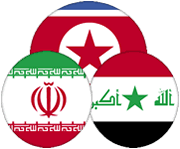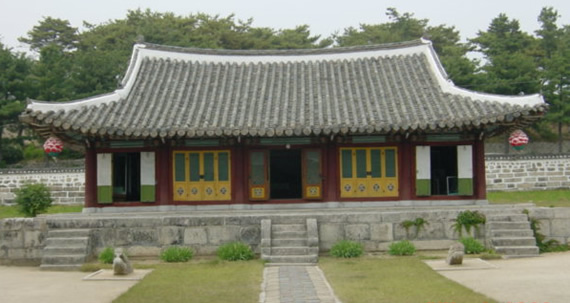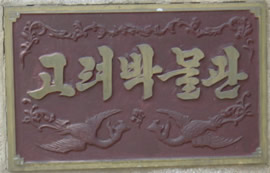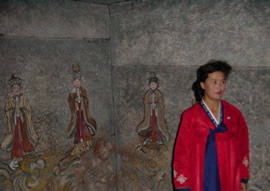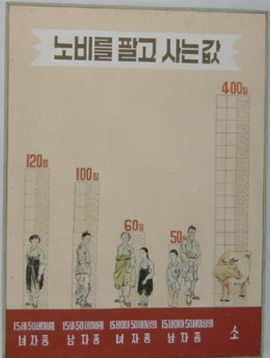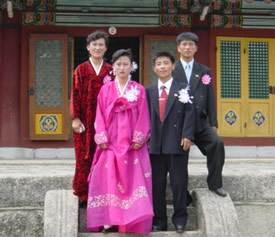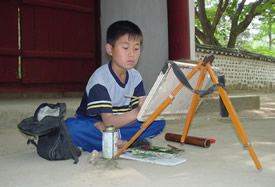|
Traditional Kaesong and the Koryo Museum |
|
Kaesong, located just a short trip from the DMZ, was once the capital of the whole country, back during the Koryo dynasty (918-1392). At the time it was famous for its artistic development, Buddhism, and the beauty of its women. Though not many traditional areas remain the North has preserved and restored a small area of buildings that now mainly serve as restaurants. The sudden trip back into a quieter, more traditional Korea after the modern mess of the DMZ makes for a radical change of atmosphere. The buildings shown below are only 15-20 minutes from the DMZ but seem a world away. The lunch was all done in a very traditional style with everyone sitting on the floor while dishes served by women in traditional hanbok gradually filled up the tables in front of us. The only thing that seemed out of place (other than us) was the meat. Having dined on dog meat numerous times in the South most of us agreed that we probably weren't eating beef . . . Squeamish diners beware - nothing says you're eating dog like having little hairs poking out of the fatty parts of the meat! |
 Walking through a small, traditional part of Kaesong to our restaurant Photo courtesy Dan Harmon |
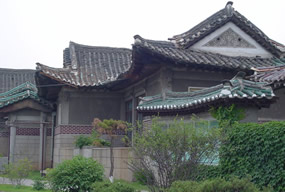 Kaesong traditional rooflines Photo courtesy Thomas St. John |
|
